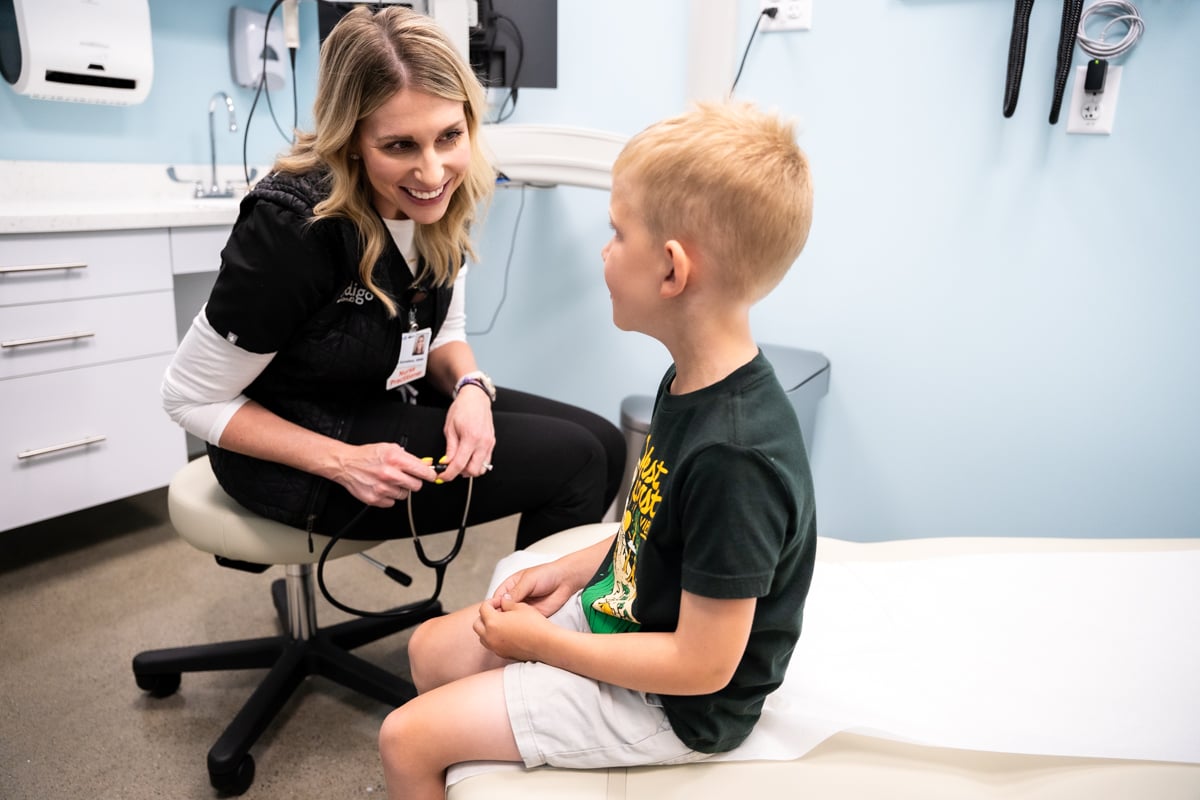Our eyes are our windows to the world, and they’re feeling the strain more than ever in today’s screen-driven society.
Eye strain is very common and pretty uncomfortable. Fortunately, most eye strain is temporary and usually not serious. But when it’s prolonged and left untreated, it could worsen and lead to vision problems or signal an underlying eye condition.
What causes eye strain?
Eye strain happens when your eyes get tired from intense use. While many things can cause it, the most common culprits are smart phones, computers, and other digital devices. With the average person spending 6.5 hours a day staring at screens, it’s no surprise that 2 out of 3 people in the U.S. experience eye strain symptoms.
Digital eye strain, also known as computer vision syndrome, happens for a few reasons, including:
- Inadequate blinking: Blinking is essential for lubricating the eye’s surface. While you normally blink 18-22 times per minute, it drops to 3-7 blinks per minute when staring at a screen. Fewer blinks mean fewer tears and more exposure to air.
- Screen glare: Light reflecting off a screen creates a glare, making it harder for your eyes to focus.
- Poor lighting: Excessive or insufficient lighting can strain your eyes.
- Poor posture: Slouching or hunching over while using devices forces your eyes to work harder to maintain focus.
Interestingly, blue light isn’t as much of a problem as it’s often made out to be. According to the American Academy of Ophthalmology, blue light from digital devices doesn’t cause eye strain or lead to other eye issues.
Do blue light glasses work?
Blue light glasses (and similar popular products) are marketed to filter out harmful blue light from digital devices like computers, phones, and tablets. While many swear by them to reduce eye strain, studies show that there is no strong scientific evidence to support these claims.
If you feel a difference when you’re wearing them, it might be a placebo effect. Your eye strain is more likely due to prolonged screen time and reduced blinking.
That said, blue light can interfere with your sleep cycle. To avoid disrupting your circadian rhythm, avoid screens for at least two to three hours before bedtime.
Other causes of eye strain
Digital screens aren’t the only offenders. Eye strain can also be cause by:
- Long-distance driving.
- Reading for extended periods.
- Detailed work like crafting, sewing, or writing.
- Doing tasks in poor lighting.
- Underlying vision problems.
- Exposure to dry indoor air caused by HVAC units.
Stress, anxiety and fatigue can also be a strain on the eyes. When your body goes into “fight or flight” mode, the release of adrenaline causes pupils to dilate and eye muscles to tense up, leading to discomfort.
What are the symptoms of eye strain?
Visual symptoms of eyestrain include:
- Sore, tired, itchy, or burning eyes.
- Watery or dry eyes.
- Eye redness.
- Blurred or double vision.
Physical symptoms of eye strain include:
- Muscle spasms of the eye or eyelid.
- The feeling that you can’t keep your eyes open.
- Increased sensitivity to light.
- Neck, shoulder, and back pain.
- Headaches
- Difficulty concentrating
What can I do to reduce eye strain?
Here are some simple but effective tips to help reduce and prevent eye strain:
- Practice the 20-20-20-20 rule: Every 20 minutes, focus on something at least 20 feet away for 20 seconds. Regularly changing your focal point helps reduce eye strain. Remember, the 20-20-20 rule works best when combined with general breaks from all screen use, including phones, computers, and TVs.
- Keep your phone at arm’s length: To reduce eye strain from phone use, position your phone about 18-25 inches from your face.
- Blink more often: Make a conscious effort to blink your eyes, especially when focused on screens.
- Lower the lights: Bright light, especially in work environments, can exacerbate eye strain. Close blinds or curtains to block sunlight, turn off ceiling lights, or use lower-intensity bulbs.
- Use lubricating eye drops to keep eyes moist and sooth dryness, irritation and discomfort. Health care pros most often recommend brands like Systane, Blink Tears, Refresh, and TheraTears.
- Optimize your workspace: Ensure your chair height is properly adjusted and lighting sources are positioned to reduce glare. If possible, upgrade to a high-quality monitor and use an anti-glare screen.
- Try using a humidifier, especially in air-conditioned environments, to help moisten eyes. Be sure to clean your humidifier regularly to avoid mold buildup.
- Quit smoking: Smoking can irritate eyes and worsen dry eye symptoms.
- Evaluate your eyewear options: If you wear glasses, consider updating your prescription or opting for lenses with anti-reflective coatings to reduce glare. Specialized computer glasses designed to reduce eye strain can also make it easier to focus on screens.
When should I seek treatment for eye strain?
Most eye strain will go away on its own with some self-care at home or in the office. But if you experience chronic or worsening eye strain, it could be a sign of an underlying condition like dry eye syndrome or an uncorrected vision issue. In these cases, it’s important to consult with an eye care provider.
Seek medical care if you experience new or worsening eye pain, especially if it comes on suddenly. If you have a sudden loss of vision, head straight to your nearest emergency room.


